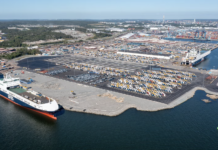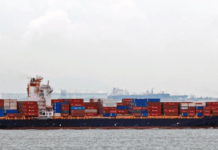
Danish maritime data analysis firm tried to analyse the connection between the global gross domestic product (GDP) and global container demand.
Prior to the pandemic, there was a rough rule of thumb that global container demand tended to grow approximately in line with global GDP, while, in decades past there used to even be a multiplier on top of this, according to Sea-Intelligence, but what is happening today?
Danish analysts explain, “Since we know the global GDP growth in 2020-2022 (and using the current estimate for 2023), we can calculate how much global TEUs should have grown versus 2019 if they had followed the GDP development. Knowing the actual TEU growth versus 2019, this in turn allows us to calculate how much global TEUs grow in excess of what the global GDP would otherwise indicate.”
They added, “What we see is that compared to the growth rate one would expect based on global GDP, the container markets are -5.9% below.”

Comparisons with TEUs tends to be a coarse measure of global demand, and TEU*Miles is better at capturing a meaningful number, when seen in the context of the global container vessel fleet capacity, according to Sea-Intelligence analysts.
In Figure 1, they calculate the difference between the GDP-implied growth rate and the actual TEU*Miles growth rate.
“As of August 2023, global demand has a shortfall of -6.8% compared to a growth pattern which would have followed global GDP growth. This is not good for the carriers, which are in the process of taking delivery of a sizeable orderbook,” noted Sea-Intelligence in its analysis.








